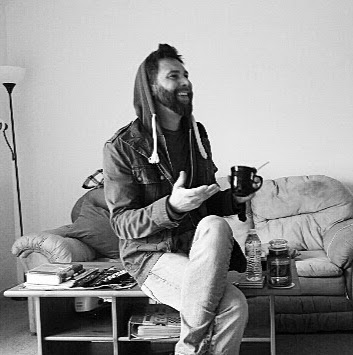Christopher Ray Schulz
age ~51
from Austin, TX
- Also known as:
-
- Chris R Schulz
- Chris Shulz
- Christophe R Schulz
- Christian R Schulz
- Christoph R Schulz
- Chris Shultz
Christopher Schulz Phones & Addresses
- Austin, TX
- Hockley, TX
- Round Rock, TX
- Mount Holly, NC
- Dacono, CO
- Westminster, CO
- Longmont, CO
- Flagstaff, AZ
- Carmel, IN
Work
-
Company:Cirkiel & Associates
-
Address:1901 E. Palm Valley Blvd., Round Rock, TX 78664
-
Specialities:Education - 40% • Family - 15% • Divorce / Separation - 15% • Communications / Media - 10% • Government - 10% • Probate - 10%
Education
-
Degree:J.D./Master's in Journalism
-
School / High School:University of Kansas
Ranks
-
Licence:Texas - Eligible To Practice In Texas
-
Date:2007
Specialities
CPS Cases • First Amendment • Open Records/Open Meetings • Probate • Special Education
Resumes

Durst Printing Manager At Buildasign.com
view sourceLocation:
Austin, Texas Area
Industry:
Printing

Developer
view sourceWork:
3pclaims 2010 - 2010
developer
developer

Attorney At Cirkiel & Associates, P.c.
view sourceLocation:
Austin, Texas Area
Industry:
Law Practice

Christopher Schulz
view sourceLawyers & Attorneys

Christopher Houston Schulz, Round Rock TX - Lawyer
view sourceAddress:
Cirkiel & Associates
1901 E. Palm Valley Blvd., Round Rock, TX 78664
5122446658 (Office), 5122446014 (Fax)
1901 E. Palm Valley Blvd., Round Rock, TX 78664
5122446658 (Office), 5122446014 (Fax)
Licenses:
Texas - Eligible To Practice In Texas 2007
Experience:
Attorney at Cirkiel & Associates - 2010-present
Assistant Attorney General at Texas Attorney General's Office - 2007-2010
Adjunct Media Law Professor at Texas State University - 2010
Assistant Attorney General at Texas Attorney General's Office - 2007-2010
Adjunct Media Law Professor at Texas State University - 2010
Education:
University of Kansas
Degree - J.D./Master's in Journalism
Graduated - 2007
University of Texas at Austin
Degree - Bachelor in Journalism
Graduated - 2003
Degree - J.D./Master's in Journalism
Graduated - 2007
University of Texas at Austin
Degree - Bachelor in Journalism
Graduated - 2003
Specialties:
Education - 40%
Family - 15%
Divorce / Separation - 15%
Communications / Media - 10%
Government - 10%
Probate - 10%
Family - 15%
Divorce / Separation - 15%
Communications / Media - 10%
Government - 10%
Probate - 10%

Christopher Houston Schulz, Round Rock TX - Lawyer
view sourceOffice:
Cirkiel & Associates, P.C.
1901 E. Palm Valley Blvd., Round Rock, TX
1901 E. Palm Valley Blvd., Round Rock, TX
Specialties:
CPS Cases
First Amendment
Open Records/Open Meetings
Probate
Special Education
First Amendment
Open Records/Open Meetings
Probate
Special Education
ISLN:
922084431
Admitted:
2007
University:
University of Texas at Dallas, B.A.
Law School:
University of Kansas, J.D.
License Records
Christopher D Schulz
License #:
7020626 - Active
Category:
EMS Licensing
Issued Date:
May 4, 2016
Expiration Date:
Jun 30, 2018
Type:
EMT-Paramedic
Isbn (Books And Publications)

Surface Water Treatment for Communities in Developing Countries
view sourceAuthor
Christopher R. Schulz
ISBN #
0471802611
Name / Title
Company / Classification
Phones & Addresses
LAW OFFICE OF CHRISTOPHER SCHULZ, P.L.L.C
21403 Greenridge Dr, Hutto, TX 78634
Us Patents
-
Diffuser For Ozone Disinfection Of Water
view source -
US Patent:6495036, Dec 17, 2002
-
Filed:Jan 8, 2001
-
Appl. No.:09/756495
-
Inventors:Christopher R. Schulz - Aurora CO 80016
James A. Reilly - Shrewsbury MA 01545 -
International Classification:C02F 178
-
US Classification:210199, 210205, 261 38, 261 74, 261DIG 42, 42218607
-
Abstract:A device for introducing ozone uniformly into water flowing through a conduit for disinfecting the water. An ozone-contacting vessel is provided and includes a downflow tube through which water is caused to flow. The downflow tube is positioned vertically within a diffusion chamber. Within the downflow tube are a plurality of layers of transversely extending porous elements that are in communication with a source of ozone to provide a relatively uniform distribution of fine ozone bubbles over the cross-sectional area of the downflow tube. The downflow tube can be J-shaped, to convey ozonated water into downstream ozone reaction cells to permit oxidation or disinfection of the water being treated. An outlet seal plate is provided at the J-tube outlet to prevent backflow into the J-tube upon shutdown of the contactor cell containing the J-tube.
-
Flow-Through Chemical Actinometer For Ultraviolet Disinfection Reactors
view source -
US Patent:6596542, Jul 22, 2003
-
Filed:Jan 8, 2001
-
Appl. No.:09/756371
-
Inventors:Christopher R. Schulz - Aurora CO 80016
-
International Classification:A61L 210
-
US Classification:436 1, 436164, 422 8205, 422 24, 250372, 2504741
-
Abstract:A chemical actinometer for determining the absolute level of exposure to ultraviolet light of a fluid to be treated for disinfection purposes. The actinometer includes a translucent sample cell through which the chemical actinometric fluid flows. The area of exposure of the actinometric fluid is controlled by allowing the ultraviolet light to pass through only a portion of the sample cell. A suitable actinometric fluid is a combination of iodide and iodate in a solution. The sample cell is positioned within an ultraviolet disinfection reactor at a position to receive ultraviolet light from the ultraviolet light source.
-
Actinometric Monitor For Measuring Irradiance In Ultraviolet Light Reactors
view source -
US Patent:6762403, Jul 13, 2004
-
Filed:May 24, 2002
-
Appl. No.:10/154983
-
Inventors:Christopher R. Schulz - Aurora CO 80016
-
International Classification:G01J 150
-
US Classification:2502521, 2504741
-
Abstract:A tubular holder for an actinometric monitoring element for monitoring the irradiance of ultraviolet light within a liquid to be treated for microorganism control. The holder extends into the interior of a vessel or a pipeline that carries a fluid to be treated by exposure to ultraviolet light. A transparent end cap is carried at the end of the holder that is within the vessel or pipeline. Positioned within the holder is an actinometric monitoring element that can be either a transparent container for an actinometric solution or a photocell, each for sensing the irradiance of ultraviolet light emitted by light sources positioned within the vessel or pipeline. The holder is removably received in a sleeve that extends through the wall of the vessel or pipeline.
-
Ultraviolet-Light-Based Disinfection Reactor
view source -
US Patent:6940075, Sep 6, 2005
-
Filed:Jul 23, 2003
-
Appl. No.:10/625835
-
Inventors:Christopher R. Schulz - Aurora CO, US
-
International Classification:B01J019/12
-
US Classification:250432R, 210748, 210150, 4221863
-
Abstract:A disinfection reactor for disinfecting liquid, such as water from a water filtration plant, by exposing the liquid to ultraviolet light. The reactor includes a generally rectangular reactor vessel and two or more medium pressure ultraviolet lamps that extend within the reactor vessel in a direction transverse to the direction of liquid flow therethrough. The reactor vessel includes liquid guide surfaces that guide liquid to flow in a converging flow path having a reduced-area flow region in the vicinity of the ultraviolet lamps. The ultraviolet lamps are positioned spaced from and between the guide surfaces.
-
In-Home Water Treatment System
view source -
US Patent:7364654, Apr 29, 2008
-
Filed:Jan 5, 2005
-
Appl. No.:11/029857
-
Inventors:Christopher Schulz - Centennial CO, US
-
International Classification:C02F 1/32
-
US Classification:2101981, 210278, 210279, 210288, 250436
-
Abstract:A method and apparatus are provided for a water treatment system that includes both filtration and ultraviolet disinfection elements in a single unit. Various embodiments include a complete treatment system having replaceable filter elements or granular filter media and ultraviolet disinfection within a single vessel. A control valve controls flow through the system in filtering, backwashing, cleaning, and rinsing modes of operation. Other embodiments include couplings that may be adapted to new or existing treatment systems to provide ultraviolet disinfection to a vessel containing replaceable filter elements or granular filter media. The coupling is adapted to receive a control valve assembly that controls flow through the vessel in filtering, backwashing, cleaning, and rinsing modes of operation.
-
Method And Apparatus For Ozone Disinfection Of Liquid-Carrying Conduits
view source -
US Patent:20040050798, Mar 18, 2004
-
Filed:Sep 14, 2002
-
Appl. No.:10/243971
-
Inventors:Christopher Schulz - Aurora CO, US
Stephen Lohman - Conifer CO, US -
International Classification:C02F001/78
-
US Classification:210/760000
-
Abstract:A method and apparatus for disinfecting the interior of pipelines and conduits, particularly water mains. Ozone is utilized as the disinfectant vehicle to neutralize microbial contamination of the conduit. An ozone generation system includes a venturi injector for introducing ozone into pressurized water to provide a treating solution that is introduced into and that flows along a predetermined length of the conduit to be treated. The ozone concentration is regulated to maintain an ozone residual at the conduit outlet of about 0.1 mg/L to about 0.2 mg/L for a time sufficient to assure the desired level of disinfection of the conduit interior.
-
Ozone-In-Water Decay Rate Analyzer
view source -
US Patent:20040053415, Mar 18, 2004
-
Filed:Sep 14, 2002
-
Appl. No.:10/244147
-
Inventors:Christopher Schulz - Aurora CO, US
-
International Classification:G01N035/08
G01N033/00 -
US Classification:436/135000, 436/052000, 436/053000, 422/081000, 422/082000, 422/103000
-
Abstract:Apparatus for determining the ozone decay rate constant for an ozone-in-water solution. The apparatus includes a single ozone residual sensor, to which a sample flow is directed to measure the initial ozone residual concentration, and to which a delayed flow stream of the same solution is directed to measure the ozone residual concentration after passage of a particular time interval. The time delay of the flow stream is achieved by passing the flow stream through a chamber that includes a tubing coil through which the sample stream flows, after which the ozone residual concentration of the delayed sample stream is measured by the same ozone residual sensor. A portion of the incoming flow stream is diverted to flow through the chamber to maintain the delayed sample stream at substantially the same temperature as the incoming flow stream.
-
In-Home Water Treatment System
view source -
US Patent:20050133431, Jun 23, 2005
-
Filed:Dec 23, 2003
-
Appl. No.:10/743032
-
Inventors:Christopher Schulz - Centennial CO, US
-
International Classification:C02F009/00
C02F009/12
C02F001/32 -
US Classification:210256000, 210748000, 210209000
-
Abstract:An in-home water treatment system that provides three stages of treatment for incoming water. The first treatment stage is a particulate removal stage, utilizing a spun fiber filter pad. The second treatment stage is a chemical compound removal stage, utilizing a carbon block filter. The third treatment stage is a disinfection stage utilizing an ultraviolet lamp. The three treatment stages are contained within a tubular enclosure to provide stage-by-stage treatment of the incoming water to improve its quality.
Classmates

Christopher Schulz
view sourceSchools:
St. Francis Xavier School Phoenix AZ 1989-1996, New School for the Arts Scottsdale AZ 1996-1998, Metropolitan Arts Institute Phoenix AZ 1998-2000

Christopher Schulz
view sourceSchools:
St. John Vianney School Orchard Park NY 1980-1990
Community:
Joyce Gentner, Ron Whitehead, Barbara Ornce, Cindy Singh

Christopher Schulz
view sourceSchools:
St. Joseph Collegiate High School Buffalo NY 1972-1976
Community:
Rebecca Blankenship, Edward Triebell, Daniel Murphy

Christopher Schulz
view sourceSchools:
Benet Academy Lisle IL 1973-1977
Community:
Mary Seiwert, Claudia Clifford, Mary Zrout, Lori Lanser, Patty Pickering, Michael Mulligan, Sue Lootens, Tom Warpinski, Sherry Grabow, Daniel Hogberg, Greg Kwiatkowski, Tracy Nicewanner

Christopher Schulz
view sourceSchools:
Windsor High School Imperial MO 1995-1999
Community:
Andy Waggoner, Ashley Pullen, Jennifer Hahn, April Terry, Jennifer Coats, Kelly Sadler, Penny Wilson, Carisa Husch, Sarah Dibartolo, Tory Longcor

Christopher Schulz | Lake...
view source
Metropolitan Arts Institu...
view sourceGraduates:
Caitlin Pritchard (1999-2001),
Michael Hoesch (1999-1999),
Christopher Schulz (1998-2000),
Ashley Hooker (1997-2001)
Michael Hoesch (1999-1999),
Christopher Schulz (1998-2000),
Ashley Hooker (1997-2001)
Youtube
Myspace
Googleplus

Christopher Schulz
Work:
Zimamoto Dogodogo-Center - Instructor EMS / Firefighting (2011)
ASB Rettungsdienst Kaufbeuren - EA im Rettungsdienst (2011)
ASB Rettungsdienst Kaufbeuren - EA im Rettungsdienst (2011)
Relationship:
In_a_relationship

Christopher Schulz

Christopher Schulz

Christopher Schulz

Christopher Schulz

Christopher Schulz
Tagline:
Wer aufhört,besser werden zu wollen, hat bereits aufgehört, gut zu sein !

Christopher Schulz

Christopher Schulz

Christopher Schulz
view source
Christopher Schulz
view source
Christopher Schulz
view source
Christopher Schulz
view source
Christopher Schulz
view source
Christopher Schulz
view source
Christopher E Schulz
view source
Christopher Schulz
view sourceFlickr
Get Report for Christopher Ray Schulz from Austin, TX, age ~51















